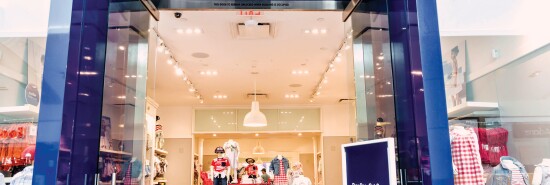
Baby clothes bust
Madeline Fry Schultz
If you only had enough money to shop for yourself or your child this season, who would you buy for? Your child, of course. This is why, even during times of economic distress, sales of children’s clothes remain fairly consistent. If even those sales start slipping, something is going seriously wrong.
Gap and Old Navy announced that baby and children’s clothes sales softened this past quarter, meaning that parents aren’t giving up on new children’s clothes yet, but their belts are getting tighter. And this isn’t a sign that parents are simply opting for cheaper clothes, considering how Gap and Old Navy tend to be popular with mid- to low-income families.
“Spending on kids is one of the last areas most parents cut back on, so softness at Gap and Old Navy suggests that some households are under significant financial strain,” retail industry analyst Neil Saunders told CNN.
And parents are just cutting back their shopping at these two stores — meanwhile, sales of baby and toddler clothing declined 3% and units sold dropped 6% from January to October when compared with that period last year.
Whether this trajectory bounces back or continues to decline will speak volumes about the state of the economy. “Parents can go just so long in clothes that are getting a bit small, but not for long,” Marshal Cohen, the NPD Group’s chief retail industry analyst, said. “So a quarter slide is one thing — multiple quarters [of decline] send a strong message.”
Parents are already struggling with child care more than in years past. Now they’re cutting back on children’s clothes — and not just matching family sets for Christmas. But there is one solution that 62% of families have found, and it’s budget-friendly and good for the planet: shopping secondhand. More than half of parents have purchased something secondhand for their children in the past year, according to Globaldata research from March. And more than 25% of these secondhand shoppers said they were motivated by inflation.
The secondhand clothes market has been seeing rapid growth over the past few years, and it has the added bonus of giving cash-strapped parents a chance to get their money back once their toddlers grow out of the clothes they wore for two months. Half of these parents have also been reselling, meaning gently used infant and children’s clothes can go to another family trying to stretch their budget.
